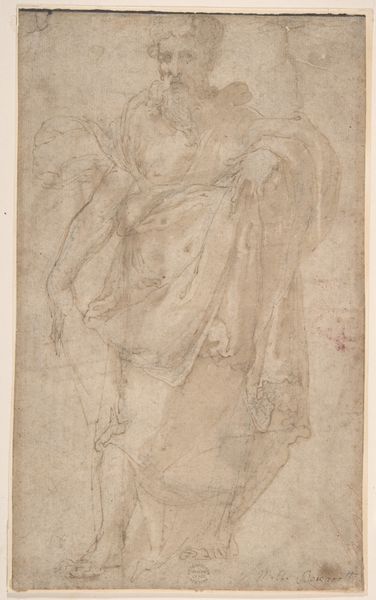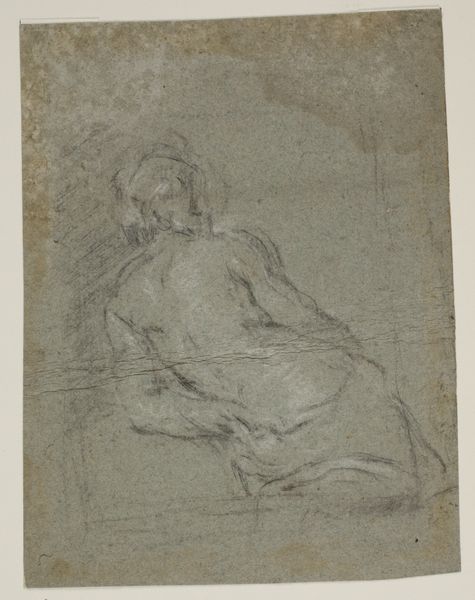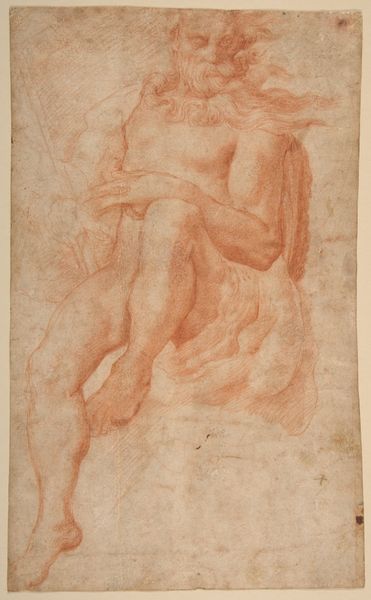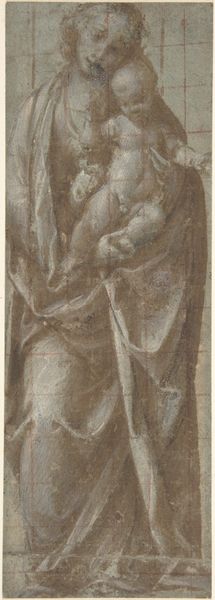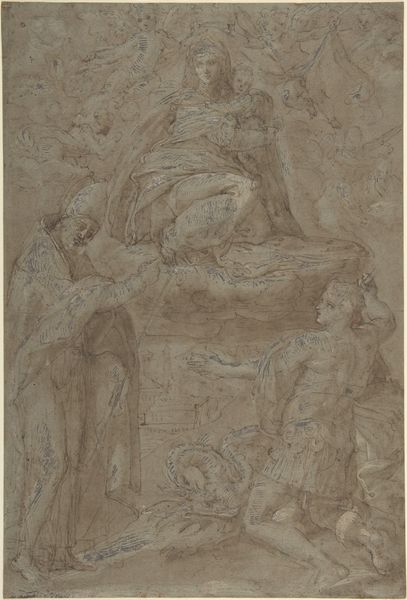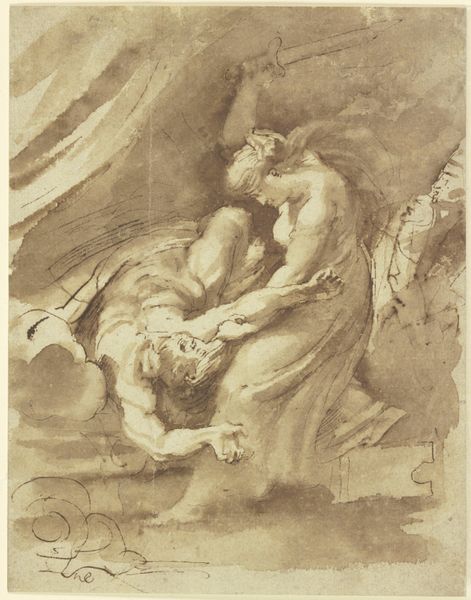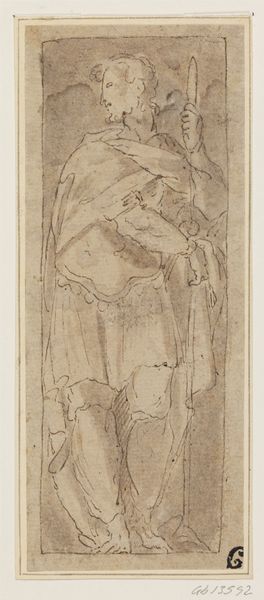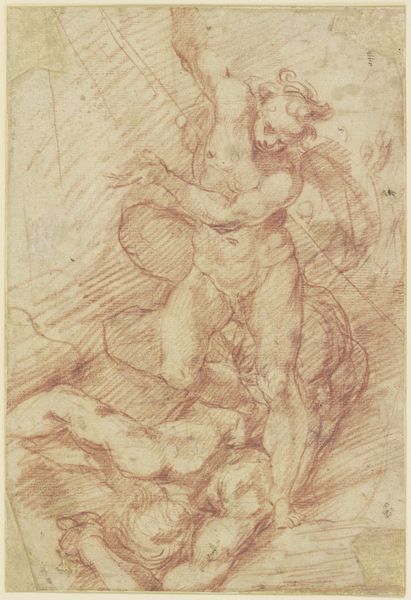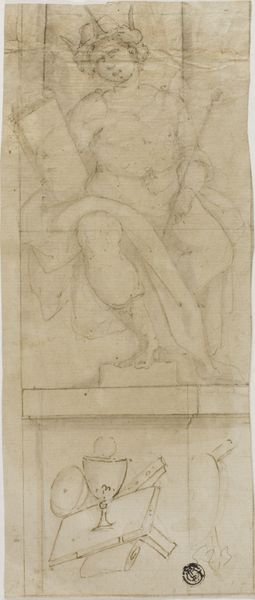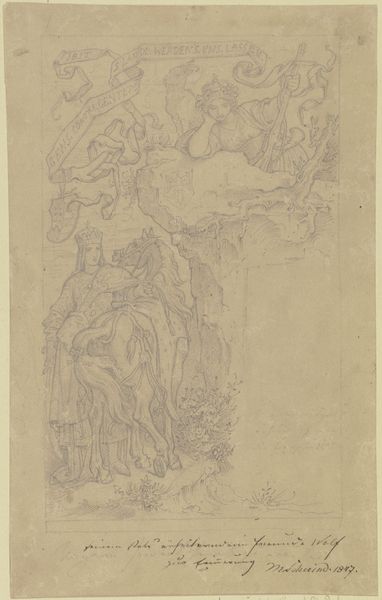
drawing, charcoal
#
portrait
#
drawing
#
toned paper
#
pencil sketch
#
charcoal drawing
#
mannerism
#
figuration
#
11_renaissance
#
sketch
#
charcoal
#
academic-art
Copyright: Public domain
Editor: This charcoal and pencil drawing on toned paper is titled "Saint Mark," by Francesco de' Rossi, also known as Salviati. It's quite striking, almost ethereal, but also unfinished. How do you interpret this work through its historical context? Curator: Well, looking at this from a historical perspective, it's essential to remember the socio-political landscape of the Renaissance and the role art played in shaping it. Artists like Salviati weren't simply creating art; they were constructing identities and power structures. Consider, for instance, the very act of depicting a saint like Mark. How does the medium – drawing, typically seen as preparatory – influence its perception, especially given its intended religious subject? Editor: That's a great point! I guess I’d always thought of drawings as less ‘important’ than paintings from that era. Curator: Exactly! That distinction is critical. Drawings often reveal the artistic process and, therefore, invite viewers into the workshop, into the artist's mind. The looseness and unfinished quality you noticed become not flaws, but insights. This allows us to consider patronage. Was this a commission? If so, was its "unfinished" state a reflection of the social standing of the patron, perhaps an evolving power dynamic? How might an unfinished state reflect shifting societal views on labor and artistic genius? Editor: That really reframes my understanding! So, the drawing's style and its status as 'unfinished' can actually tell us a lot about its social function and the relationship between the artist and society? Curator: Precisely! Think about the art market then – who was meant to see it, and how did that shape its creation and reception? It prompts a critical assessment of how institutions like the church, the art market, and even Salviati himself, were active agents in crafting not just a religious figure, but an idea about faith, art, and power itself. Editor: That gives me so much to consider! It's incredible how a single drawing can be so rich with historical information once you start thinking about those dynamics. Curator: Indeed. Art is never just aesthetic; it's deeply intertwined with the world it inhabits. Looking at it through that lens transforms our experience.
Comments
No comments
Be the first to comment and join the conversation on the ultimate creative platform.
